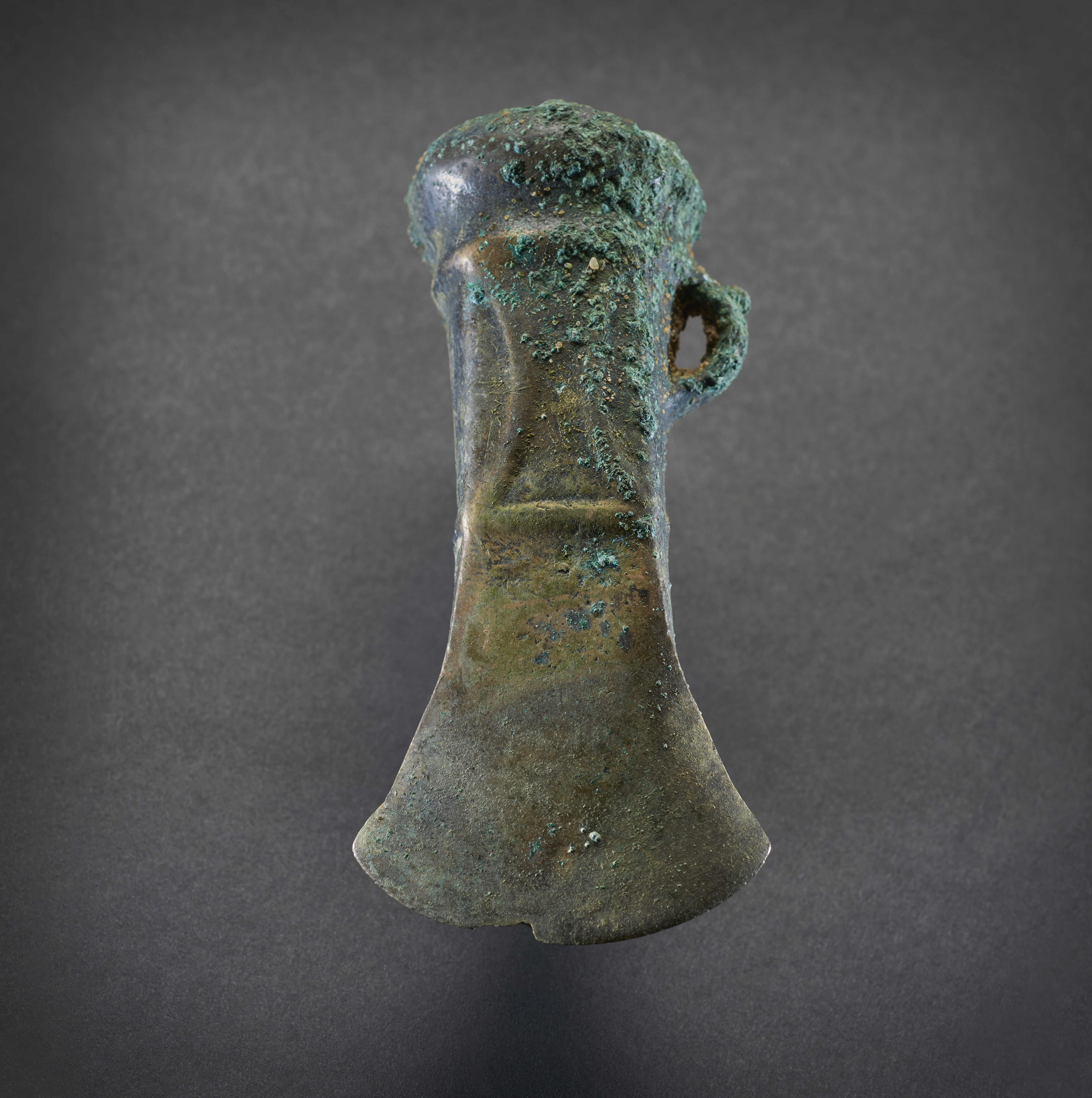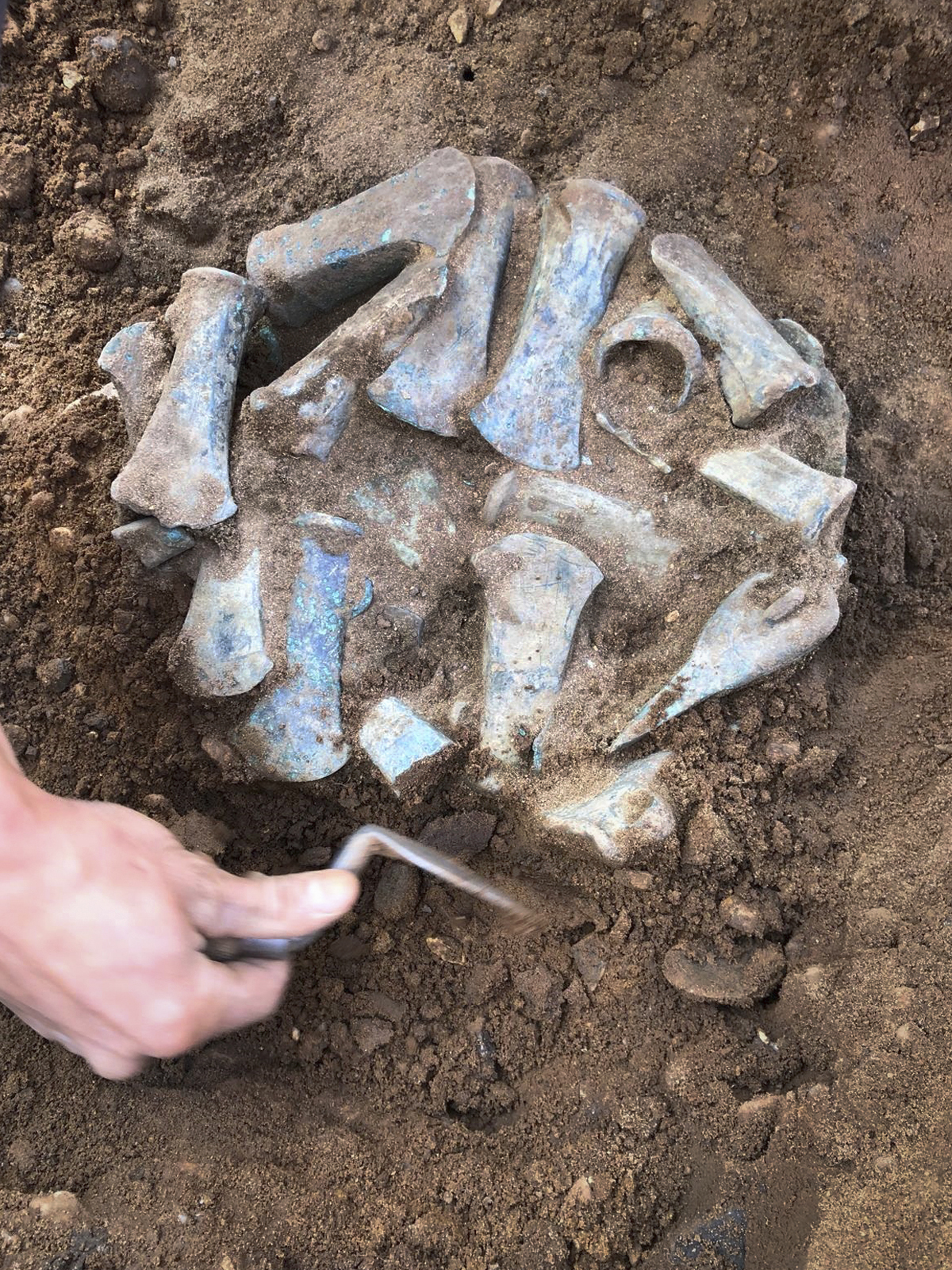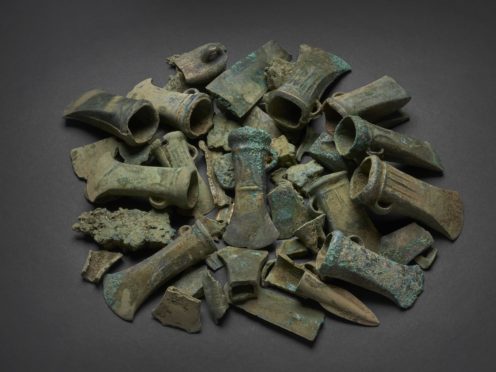Bronze Age treasure discovered near the River Thames is going on display for the first time.
More than 450 bronze objects, including weapons and tools, were unearthed in east London.
The find is one of the largest Bronze Age hoards in the UK.
The treasure was found in Havering by archaeology experts who were asked to look at a site being developed for gravel extraction.

“This exceptional discovery came up,” curator Kate Sumnall said.
Dating from between 900 and 800BC, the objects will go on show for the first time in Havering Hoard: A Bronze Age Mystery, at the Museum Of London Docklands.
They include axe heads, spearheads, fragments of swords, daggers and knives.
Ms Sumnall told the PA news agency: “We can tell a lot about what life was like for Bronze Age people living in this part of London.
“Hoarding is something we see a lot of in the late Bronze Age.
“We don’t have all the answers. Our knowledge of the Bronze Age is quite fragmentary. But every time we find something it gives us another piece in that jigsaw puzzle.”

She said: “This may have been a store, for a metal worker, or some sort of offering to the gods perhaps. We don’t know.
“It may have been for recycling. Bronze can be melted down and recast almost an infinite number of times.”
She said: “There are a lot of overlaps between what we know about the Bronze Age and today.
“There was climate change, but that was part of a natural pattern, and so water levels were rising.
“If settlements were adjacent to rivers, people may have had to move and the weapons could have been buried then.”
Almost all the objects, discovered in September last year, appear to be partially broken or damaged and it is not known why they were not recovered.
Historic England chief executive Duncan Wilson said: “This extraordinary discovery adds immensely to our understanding of Bronze Age life…
“The opportunity to investigate here and ultimately unearth the remarkable hoards that have come to light was only possible because of the effective partnership between archaeologists and developers.”
Roy Stephenson, London’s historic environment lead at the Museum Of London, said: “We’re thrilled to be able to display this momentous discovery for the first time at the Museum Of London Docklands as the centrepiece of a major exhibition in April 2020.”
The museum has acquired the objects after they were declared treasure by the coroner.
The hoard will travel to the Havering Museum for display after going on show at the Museum Of London Docklands.
